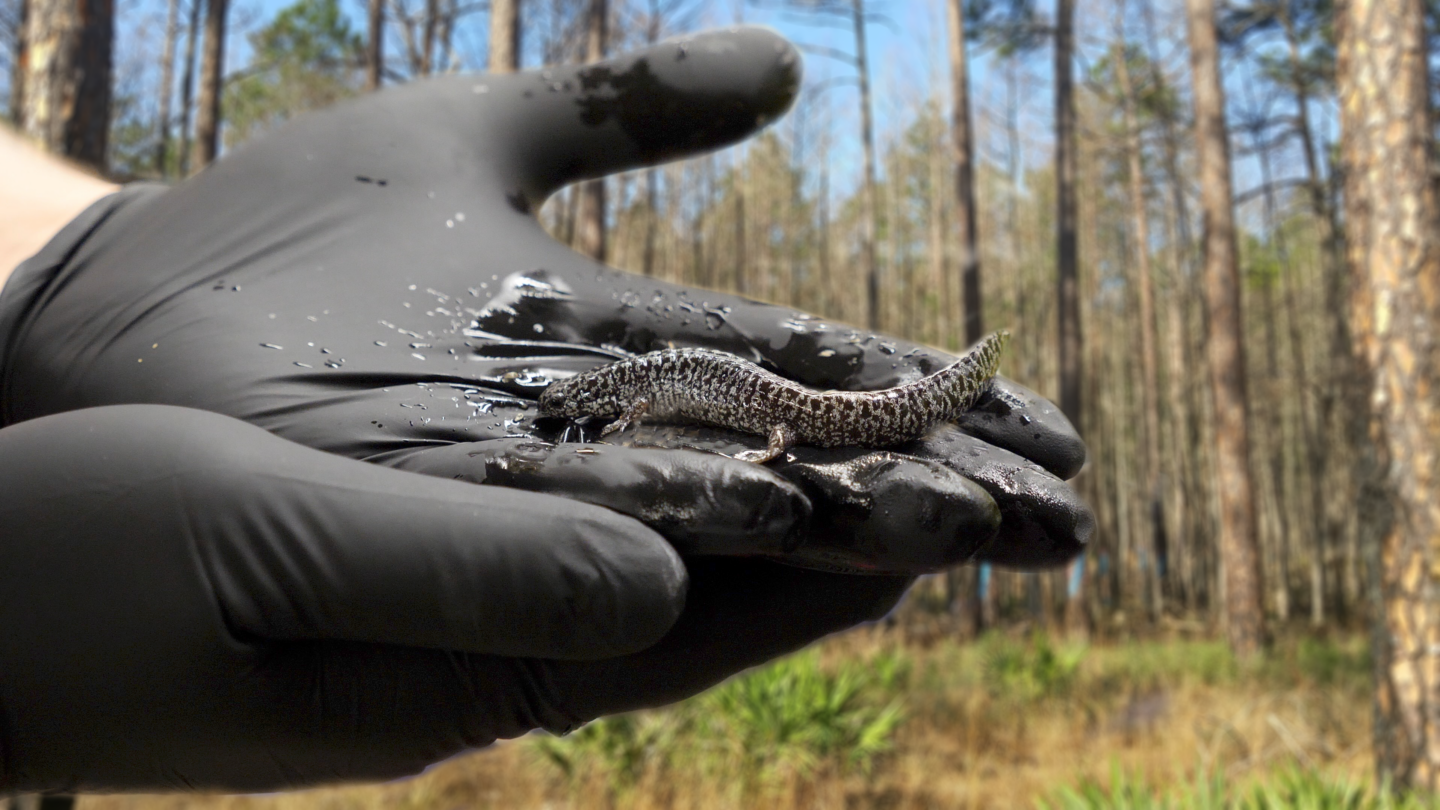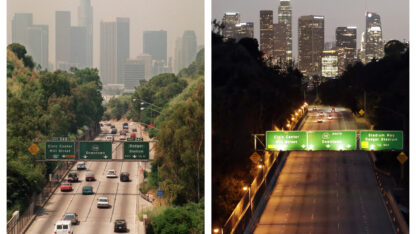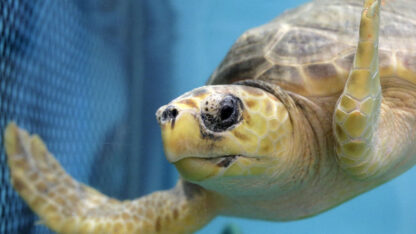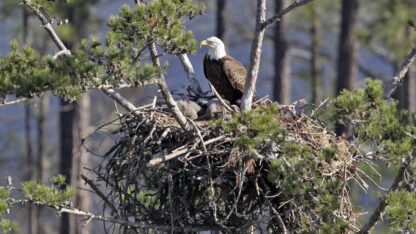A conservation success is taking shape at an Atlanta non-profit. It’s an early step — but a major one — in the effort to save a super-rare Southern species from extinction.
It’s not a fuzzy or cuddly creature, or big and majestic, either.
But still, biologist Harold Mitchell said, “There’s something to be said for the little creepy crawlies.”
The creepy crawly in this case is the frosted flatwoods salamander, a glistening black squiggle with silvery-white splotchy stripes.
And the success is that after years of work to get them to breed in captivity, the salamanders have finally done it. They started hatching this week at the Amphibian Foundation in Atlanta.
Mark Mandica, the executive director and co-founder of the organization, figured out over Christmas break that the salamanders had laid eggs.
Or, more accurately, his son realized it, when he was tagging along with his dad at work.
“He was just like, ‘Oh, I think there’s some eggs in here,’” Mandica said. “At first I was like, ‘Oh, okay, whatever, I don’t know what he was seeing.’”
The eggs were there though. “I’m even getting goosebumps right now just talking about it,” Mandica said.
Frosted flatwoods salamanders used to be more common in the South’s longleaf pine forests. But those forests are mostly gone, reduced by about 97% from their original area.
The frosted flatwoods salamanders now live in the wild in two parks in Florida and in a single wetland at Fort Stewart, near Savannah.
“Our estimates are that they maybe have another five or 10 years without significant conservation intervention before they’re extinct,” Mandica said.
In addition to the loss of their forests, the salamanders are threatened by climate change and more extreme weather patterns, and also by wildfire suppression — they evolved alongside fire. There are so few of them left, even a single event poses major risks to the species. Hurricane Michael in 2018, for example, was a close call for the Florida populations.
Several years ago, Mandica, working with state and federal wildlife agencies and other experts, collected eggs and larvae from the wild that would have otherwise dried up and died, and brought them back to Atlanta to raise in captivity, as a safeguard.
He’s been trying to breed them, something no one else has figured out how to do, until now.
Since December, the salamanders at the Amphibian Foundation have laid about 70 eggs.
Mitchell, who is the lead on the species at the U.S. Fish and Wildlife Service, said when he found out the salamanders had bred, he felt like his team had won the Super Bowl.
“It’s actually huge in the idea of how to turn the corner and bring these things back from the brink of extinction,” he said.
Frosted flatwoods salamanders are considered threatened by the U.S. Fish and Wildlife Service. In 2014, Mitchell recommended changing their status to endangered. The agency hasn’t made a decision on it. But Mandica said, in his view, they’re clearly endangered. “This is a very fragile species,” he said.
Now that the captive ones have bred, Mandica said, people working to save the species can think about next steps, like breeding them at other institutions, too.
“This achievement has kind of opened up those discussions in new and exciting ways,” Mandica said.
They’d need to produce thousands of them to be able to reintroduce them to the wild—and they’d need suitable habitat to reintroduce them to, too.
Mitchell said it’s a long-term effort that could take 20 years. He compared this success to the Wright Brothers’ first flight, and what they’re trying to achieve—getting this species restored and off the endangered species list—to the space shuttle.
“But without that 12-second flight, there’s no avenue to the space shuttle,” he said.









